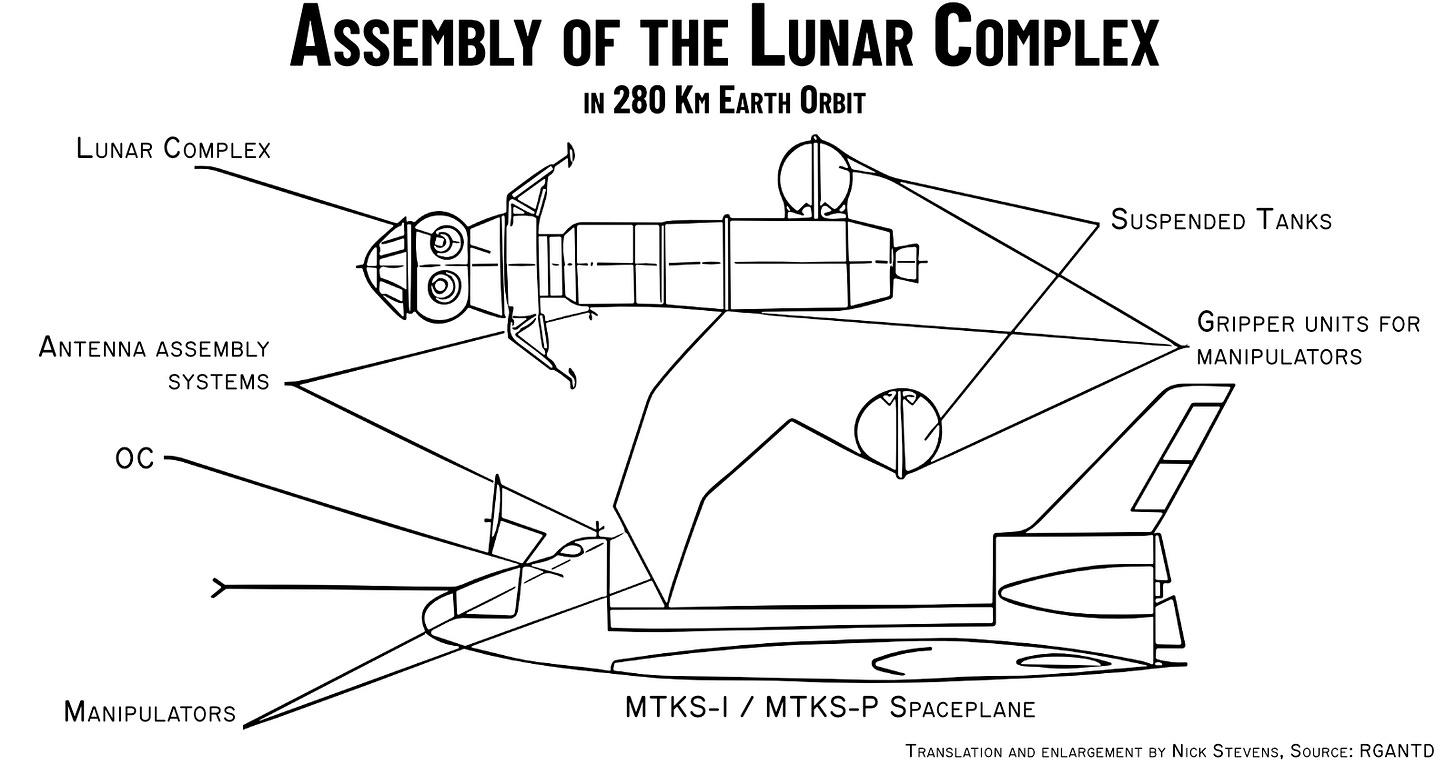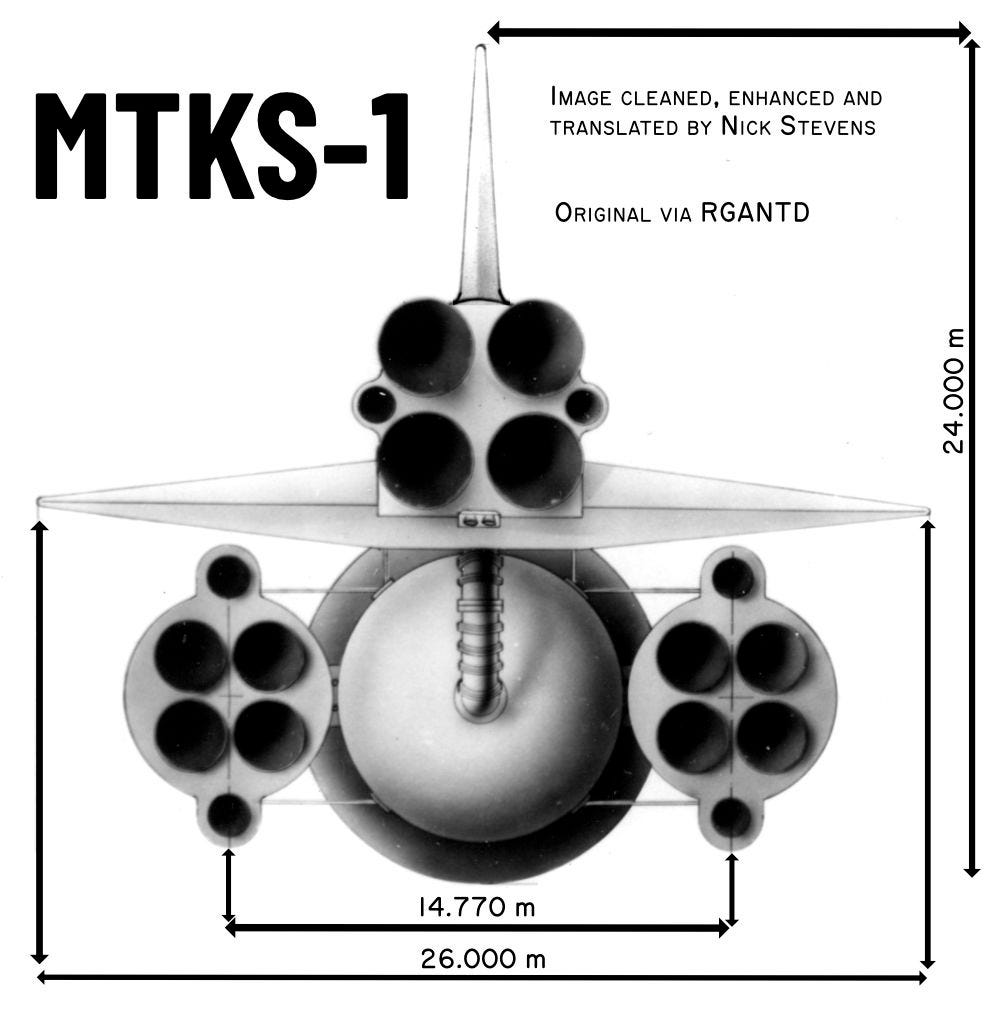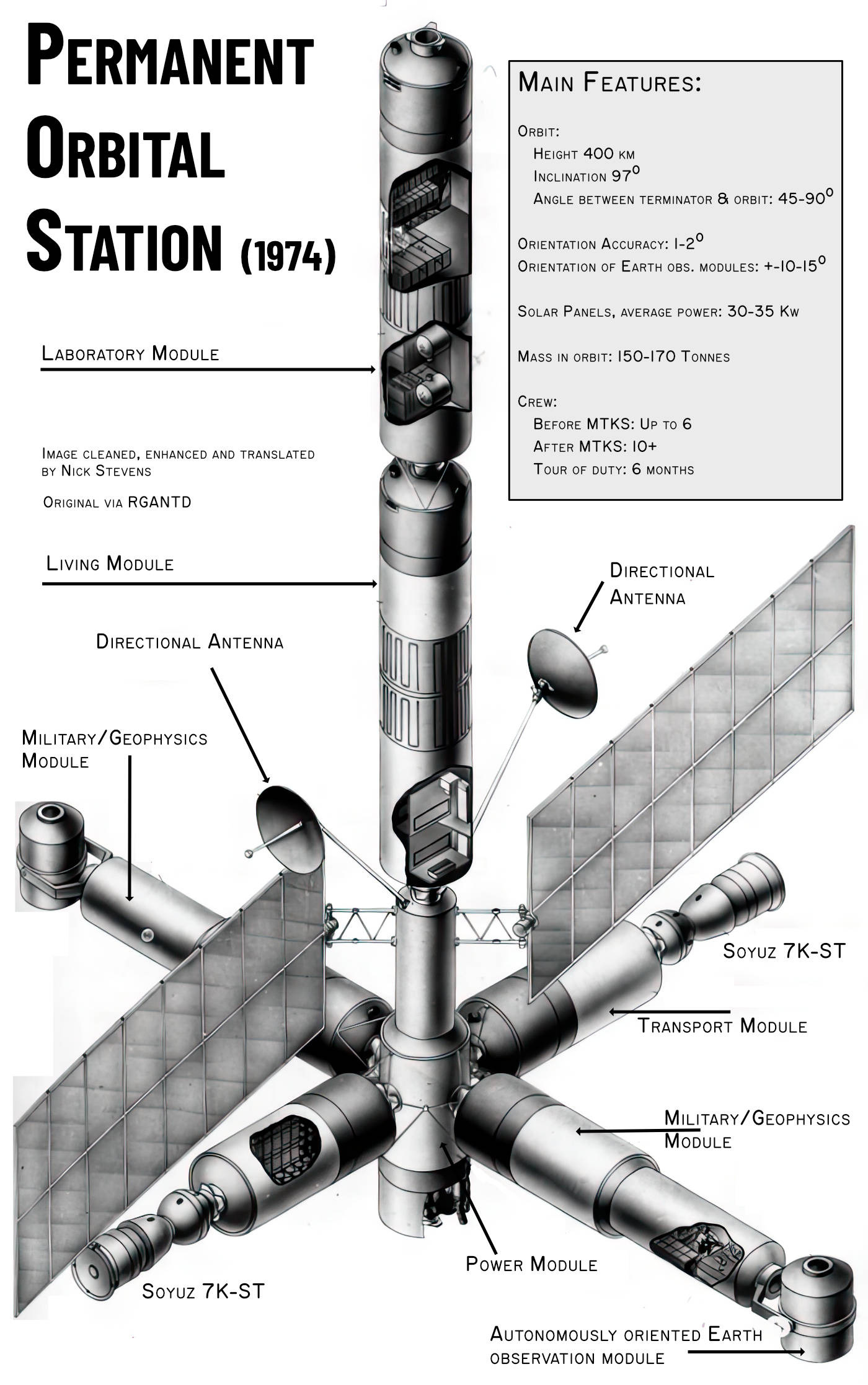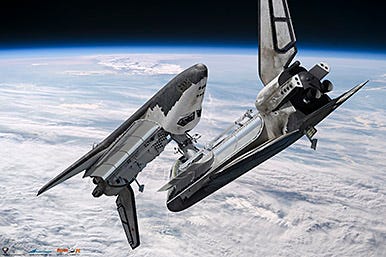MTKS Shuttles, New Lunar Architecture
Using the MTKS Spaceplanes to support lunar missions.
This is still really new from RGANTD, and I think more information will come out soon. But I thought it worth posting in the current state, as it’s such a surprising development.
Glushko’s 1974 Lunar Proposal
The constant tension between the simplicity of single-launch missions, and the mass benefits of multiple launches were a running feature of Soviet Crewed Lunar programs, from the earliest days.
But what if you used a launch system designed for frequent re-use?
Such as the MTKS Shuttle?
Glushko proposed this approach, and described it in some detail, noting the advantages such a system brought to a multiple launch scenario. More specifically the options for assembling a large lunar craft in Earth orbit.
Translation by me, using DEEPL.
The orbital spaceplane, (OS), of the reusable transport space system (MTKS-I, MTKS-II), will make it possible to launch and assemble complex space systems for the Lunar Lander. In particular, when organising a lunar expedition to a circular orbit, providing for the assembly period (minimum altitude 280 km and inclination 50.70), an orbital spaceplane can launch and dock with a previously launched 35 tonne block, having an orientation system, a passive part of the assembly system, as well as special gripping units for OS manipulators.
The dimensions of the cargo compartment of the OS (0.5 metres and 20 metres in length) allow transporting both assembled blocks and component parts with subsequent assembly, with the help of mechanical systems of the OS.
Overall dimensions of the grippers, their design and automation will be considered in more detail at the stage of preliminary design.
In the process of assembly and preparation for flight of the lunar complex and rocket blocks with the LLVS, the MTKS spaceplane can be assigned tasks related to checking the correct functioning of systems, delivery of lunar crews, and the replacement and repair of failed equipment.
In the future will be possible to increase the mass of the block up to 40 tonnes by improving the system and docking methods.
As described elsewhere on this site, a two launch mission would often have a lander launched on one rocket, and a large braking stage on the second. Note how the external spherical tanks provide plenty of extra fuel. The crew could also be launched on the MTKS, meaning the rocket that lofted the lunar complex did not need to be man-rated.
The MTKS Spaceplane.
The MTKS spaceplane was part of Glushko’s early grand design after he gained control of OKB-1 and the whole lunar program. This was to be part of the RLA family of launchers, with shared elements, intended to cover every launch requirement.
No less than 3 versions of the MTKS Shuttle were planned.
“REUSABLE ORBITAL AIRCRAFT, FIRST STAGE AND FUEL COMPARTMENT OF THE SECOND STAGE ARE SINGLE USE”
Version 2, MTKS II
A second more advanced version was also planned.
MTKS-0
There was also a small version spaceplane proposed, the TMKS-0. This would only support a single cosmonaut.
This editions cool image:
From the same tranche, Glushko’s 1974 proposal for a Permanent Orbiting Station.
Note from the key features that he seems to have prioritised military usefulness, with a polar orbit for full global coverage.
This edition’s cool link:
Vadim Lukasevich’s BURAN.RU
Vadim is probably the world expert on spaceplanes and shuttles. You will need computer translation to explore properly, unless you speak Russian.












Great job!
We love your work and have you in our recommended Substack at https://vibes.starlite-campbell.com